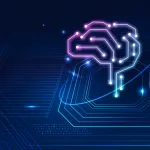In the ever-evolving landscape of information technology (IT), the challenges faced by professionals and organizations continue to grow in complexity. From troubleshooting technical issues to optimizing processes and crafting innovative solutions, the demands on IT teams are relentless. In this dynamic environment, the integration of Generative Artificial Intelligence (AI) has emerged as a game-changer, revolutionizing the way IT professionals approach problem-solving. In this blog, we will explore the profound impact of Generative AI on IT problem solving, shedding light on real-world applications and the promising future it holds.
The Rise of Generative AI in IT
Generative AI, a subset of artificial intelligence, employs machine learning algorithms to generate content, whether it’s text, images, or even code, based on patterns and training data. This remarkable technology has paved the way for smarter IT problem solving by enhancing automation, providing insights, and offering innovative solutions. Let’s delve into the key ways in which Generative AI is transforming the IT landscape.
Automating Routine Tasks:
In the IT world, there’s no shortage of repetitive, time-consuming tasks. Generative AI algorithms can automate these routine activities, such as system updates, data backups, and log analysis. This automation not only reduces the burden on IT professionals but also minimizes the risk of human error, enhancing system reliability and security.
Code Generation and Debugging:
One of the most revolutionary applications of Generative AI in IT is code generation. AI-powered tools can generate code snippets, scripts, and even entire applications based on high-level instructions. This not only speeds up development but also reduces the chances of coding errors. Moreover, Generative AI can assist in debugging by identifying and suggesting fixes for code issues.
Predictive Maintenance:
Generative AI can analyze vast amounts of data, such as server logs and sensor readings, to predict equipment failures and downtime. IT teams can proactively address issues before they cause disruptions, resulting in improved system reliability and cost savings.
Natural Language Processing (NLP) for Support:
Generative AI-driven chatbots and virtual assistants equipped with NLP capabilities can interact with users, understand their IT-related queries, and provide real-time assistance. This not only streamlines support services but also enhances the user experience.
Data Analysis and Insights:
In an era of big data, Generative AI can sift through massive datasets, extract valuable insights, and identify trends that may not be apparent to human analysts. This data-driven approach empowers IT professionals to make informed decisions and optimize processes effectively.
Real-World Applications
Generative AI’s role in IT problem solving is not confined to theory; it’s making a tangible impact in the real world. Let’s explore a few notable examples:
GitHub Copilot:
This AI-powered coding assistant, built on OpenAI’s GPT-3, assists developers by offering code suggestions, auto-completions, and even translating natural language comments into functional code. It accelerates coding tasks and fosters collaboration within development teams.
Applitools:
Applitools employs advanced AI algorithms to automatically identify and locate visual bugs in software applications across various platforms and devices. This meticulous approach ensures applications maintain a high level of visual quality, enhancing user experience and reducing disruptions.
Diffblue:
Specializing in automatically generating unit tests for Java codebases, Diffblue significantly reduces the manual effort traditionally required for testing. It not only accelerates the testing process but also bolsters code coverage, improving software quality.
Dynatrace:
Dynatrace utilizes AI to monitor and analyze the performance of IT systems in real time. It proactively detects anomalies and provides actionable insights, ensuring optimal system performance and reliability.
The Future of IT Problem Solving with Generative AI

As Generative AI continues to evolve, its role in IT problem solving is poised for significant expansion. The technology’s ability to adapt, learn, and improve over time means that it will become an indispensable part of the IT toolkit. Here are a few glimpses of the future:
Hyper-Personalized User Experiences:
Generative AI will usher in a new era of user-centric IT solutions. IT teams will harness the power of AI to analyze user behavior, preferences, and historical interactions with digital systems. Armed with this deep understanding, AI algorithms will craft highly personalized experiences for each user. For instance, when a user contacts IT support, the system will not only address their technical issues but also cater to their individual preferences, offering solutions that align with their unique needs. Furthermore, software solutions will adapt in real time to match user preferences, making the digital experience seamless and highly tailored.
Advanced Security:
As the IT landscape becomes more complex, so do the threats it faces. Generative AI will play a pivotal role in fortifying digital fortresses. AI-driven cybersecurity solutions will continuously analyze network traffic, system logs, and user behavior. What sets these solutions apart is their ability to not only detect known threats but also predict and identify new, previously unseen vulnerabilities and attacks. In a world where cyber threats evolve rapidly, AI will act as a vigilant guardian, proactively identifying and mitigating risks in real time. This advanced security posture will provide organizations with peace of mind, ensuring the confidentiality, integrity, and availability of their critical data and systems.
Autonomous IT Systems:
The era of autonomous IT systems is on the horizon, thanks to Generative AI. IT professionals will witness a transformation in the way systems are managed and optimized. With Generative AI at the helm, routine tasks such as system updates, resource allocation, and performance optimization will be executed autonomously. IT systems will adapt to changing demands, automatically scaling resources during traffic spikes and efficiently managing workloads. The need for constant human intervention will diminish, freeing up IT professionals to focus on strategic initiatives and innovation. Autonomous IT systems will not only enhance efficiency but also reduce the risk of human error, resulting in higher system reliability and availability.
Enhanced Collaboration:
Generative AI will act as a catalyst for collaboration among IT professionals. AI-powered tools will facilitate seamless knowledge sharing and problem-solving within IT teams. For instance, when a complex issue arises, AI systems will intelligently identify relevant experts within the organization and connect them in real time. These experts can then collaborate through virtual environments, enhancing the speed and effectiveness of issue resolution. Additionally, AI will serve as a knowledge repository, offering instant access to relevant documentation, best practices, and solutions.
Also Read: “Harnessing Generative AI for Agile Software Development: A Transformational Approach“
Challenges and Ethical Considerations
While Generative AI offers immense potential, its integration into IT problem solving comes with several challenges and ethical considerations that IT professionals and organizations need to address:
Data Privacy and Security:
The use of Generative AI often involves handling vast amounts of sensitive data. Protecting user and organizational data from breaches and ensuring compliance with data privacy regulations (e.g., GDPR, CCPA) are paramount. IT teams must implement robust security measures and encryption protocols to safeguard data.Algorithmic Bias:
Generative AI models learn from historical data, which can contain biases. These biases may inadvertently perpetuate discrimination or unfairness in IT solutions. IT professionals must carefully curate training data and continuously monitor AI systems to mitigate bias and ensure fairness in outcomes.Responsible AI Use:
The responsible use of AI involves considering the broader societal impact of AI solutions. IT teams should prioritize transparency and accountability in AI systems, making it clear how decisions are made and ensuring that AI does not harm individuals or communities.Training and Skill Gaps:
Integrating Generative AI into IT problem solving requires specialized knowledge and skills. IT professionals may need to undergo training to effectively utilize AI tools and systems. Organizations should invest in upskilling their teams to harness the full potential of AI.Regulatory Compliance:
As AI technologies evolve, regulatory frameworks are adapting. IT professionals and organizations must stay informed about AI-related regulations and ensure compliance to avoid legal issues and penalties.
Generative AI is proving to be a game-changer in IT problem solving, offering smarter solutions, greater efficiency, and improved user experiences. As the technology continues to advance, IT professionals and organizations that embrace Generative AI will find themselves better equipped to meet the ever-evolving challenges of the digital age. The future of IT problem solving is undeniably smarter, thanks to Generative AI’s transformative capabilities.

























